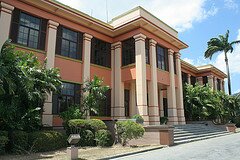The Power of Biomechanics in Sports Performance
In the world of sports, the pursuit of excellence is a common goal shared by athletes, coaches, and enthusiasts alike. To achieve this, athletes continually strive to push the boundaries of their physical capabilities, coaches aim to refine techniques and strategies, students seek to understand the science behind it all, and physical therapists endeavor to keep athletes in peak condition. At the intersection of these aspirations lies the fascinating and impactful realm of biomechanics. In this article, we explore the power of biomechanics in sports performance, unveiling its significance for all these stakeholders. The relevance of the disclosure of this topic is confirmed by the fact that today's youth are increasingly revising their lifestyle and starting to engage in sports, students participate in competitions, and they are able to devote enough time to this, as they buy college papers online and can't be shy about completing important tasks.
Understanding Biomechanics
Biomechanics, at its core, is the science that studies the mechanical aspects of living organisms, particularly the human body. In the context of sports, it examines how the laws of physics and engineering apply to the movements and actions of athletes. Understanding biomechanics means recognizing how every action in sports, from running to jumping to throwing, is governed by a complex interplay of forces, levers, and motion. This understanding serves as the foundation for improving athletic performance.
Biomechanical Principles
To grasp the significance of biomechanics, let's delve into some fundamental principles:
- Newton's Laws of Motion: These laws, elucidated by Sir Isaac Newton, are fundamental to biomechanics. For example, Newton's Third Law states that for every action, there is an equal and opposite reaction. In sports, this law helps us understand how force and motion are interconnected, such as in sprinting or striking a ball.
- Center of Mass and Balance: The body's center of mass plays a critical role in maintaining balance during sports activities. Athletes must learn to manipulate their center of mass to optimize performance and stability.
- Levers and Mechanical Advantage: Knowledge of levers and mechanical advantage helps athletes, coaches, and physical therapists understand how to generate more force with less effort. This is especially crucial in activities like weightlifting and throwing.
- Force Vectors: Biomechanics helps athletes identify the direction and magnitude of forces acting on their bodies. This information aids in the precise execution of techniques, enhancing performance and preventing injuries.
Role of Biomechanics in Different Sports
Biomechanics is not a one-size-fits-all concept; its applications vary across different sports. Let's take a look at some examples:
- Team Sports: In sports like basketball and soccer, biomechanics influences passing accuracy, shooting power, and even the efficiency of running. Coaches can use biomechanical principles to optimize team strategies.
- Individual Sports: In sprinting, the mechanics of starting, accelerating, and maintaining speed are vital. In gymnastics, understanding balance and force distribution is paramount. Biomechanics guides the analysis and improvement of these elements.
- Injury Prevention: For physical therapists, biomechanics is a crucial tool in injury prevention and rehabilitation. By analyzing an athlete's movements, therapists can identify areas of vulnerability and develop targeted interventions to reduce injury risks.
Biomechanics for Students
For students with a budding interest in sports and science, biomechanics offers a unique blend of both worlds. Learning the principles of biomechanics can not only provide academic benefits but also open doors to exciting career opportunities. Sports science, sports medicine, and physical therapy are just a few fields where a strong foundation in biomechanics is invaluable.
Improving Athletic Performance
Athletes, regardless of their level, can harness the power of biomechanics to enhance their performance:
- Technique Analysis: Biomechanical analysis can reveal inefficiencies in an athlete's technique. For instance, a swimmer can use data on stroke mechanics to swim faster with less effort.
- Strength and Conditioning: Understanding the mechanics of strength and conditioning exercises allows athletes to design more effective training programs. Lifters can optimize their workouts, and runners can fine-tune their stride.
- Injury Prevention and Rehabilitation: By examining an athlete's biomechanics, trainers and physical therapists can identify risk factors for injuries. Targeted exercises and interventions can then be employed to prevent or rehabilitate injuries effectively.
Coaching with Biomechanics
Coaches play a pivotal role in the development of athletes, and biomechanics can be a game-changer in coaching:
- Video Analysis and Feedback: Coaches can record and analyze athletes' performances to provide feedback based on biomechanical principles. This helps athletes understand and implement changes in their techniques.
- Customized Training Programs: Knowledge of biomechanics enables coaches to design personalized training programs for athletes, focusing on their strengths and addressing weaknesses.
- Enhancing Athletes' Understanding: Coaches can use biomechanics as a teaching tool. When athletes comprehend the science behind their actions, they are more likely to make meaningful improvements.
Biomechanics for Physical Therapists
For physical therapists, biomechanics is an invaluable tool in injury assessment and treatment:
- Identifying Movement Aberrations: By studying the biomechanics of an athlete's movements, therapists can identify irregularities that may lead to injuries.
- Targeted Rehabilitation: Biomechanics guides the development of rehabilitation programs that address the root causes of injuries. This not only accelerates recovery but also reduces the risk of re-injury.
- Case Studies: Let's explore some real-life examples to understand the power of biomechanics in sports. Consider an athlete's journey from injury to recovery, with biomechanics playing a central role in the process.
Advanced Biomechanical Tools and Technologies
In recent years, the field of sports biomechanics has witnessed remarkable advancements in technology:
- Motion Capture Systems: High-tech systems can precisely track athletes' movements, providing invaluable data for analysis.
- Wearable Sensors: Athletes can now wear sensors that monitor their performance, providing real-time feedback on technique and injury prevention.
- Computer Simulations: Advanced computer simulations allow for in-depth analysis of movements and offer insights into optimizing techniques.
Real-Life Examples
To highlight the real-world impact of biomechanics in sports:
- Success Stories: Share success stories of athletes and teams that have benefited from biomechanical analysis, including enhanced performance and injury reduction.
- Revolutionizing Sports: Explore how biomechanics has revolutionized the sports world, from training techniques to equipment design.
Ethical Considerations
While biomechanics offers significant advantages in sports, ethical considerations are essential. Discuss the implications of using biomechanics in sports, including potential controversies surrounding performance-enhancing technologies.
Future Trends in Sports Biomechanics
The field of sports biomechanics is continually evolving. Explore emerging trends and areas of research, such as AI-driven performance analysis and biofeedback technology.
Conclusion
In conclusion, biomechanics is the unsung hero in the world of sports performance, touching the lives of students, athletes, coaches, and physical therapists alike. It's a science that not only enhances performance but also keeps athletes healthy and thriving. Embracing biomechanics is the key to unlocking the full potential of sports. It's a game-changer in the relentless pursuit of excellence. Whether you're a student, athlete, coach, or physical therapist, biomechanics is a powerful ally in your quest for success. So, dive into this captivating science, and let it elevate your sports journey to new heights.

